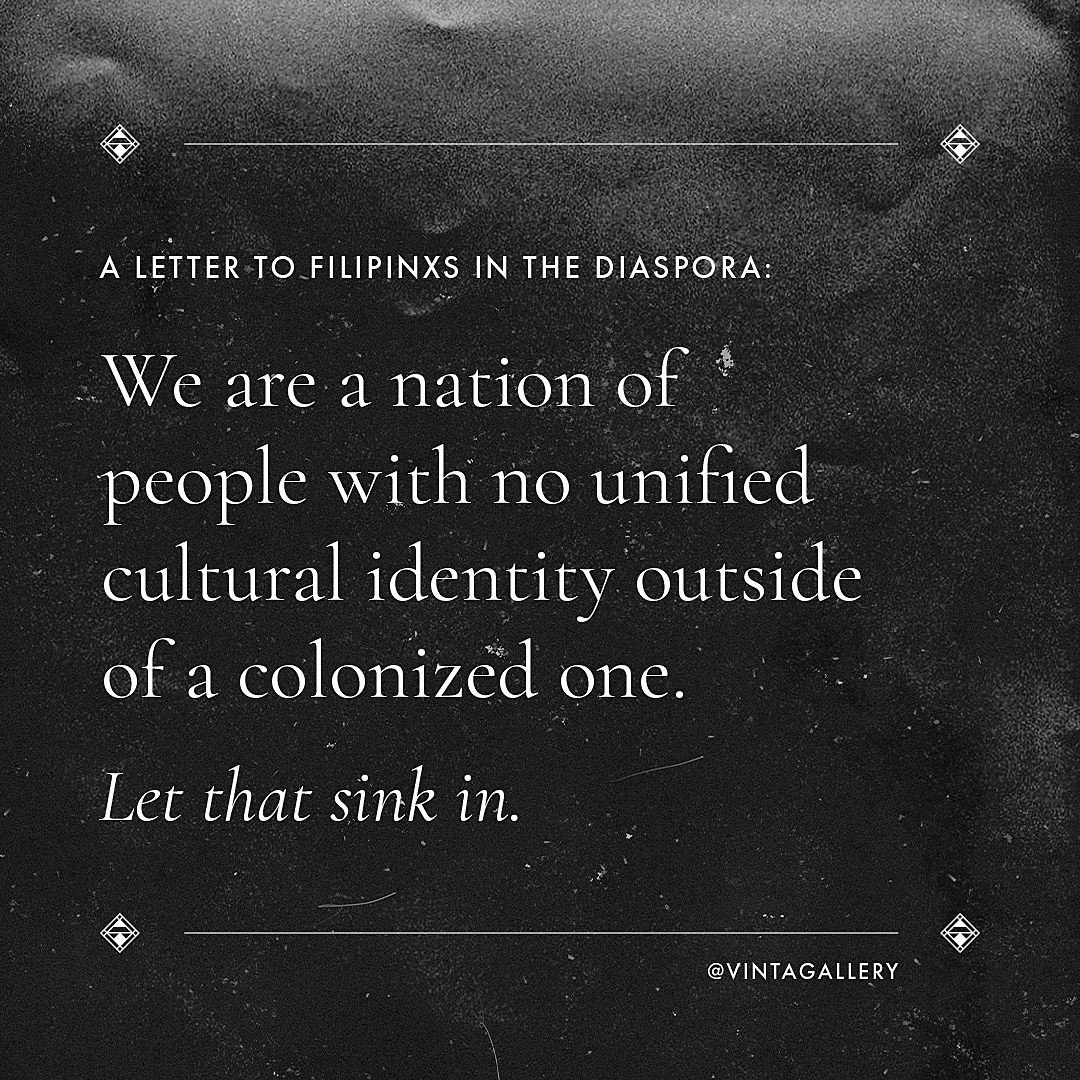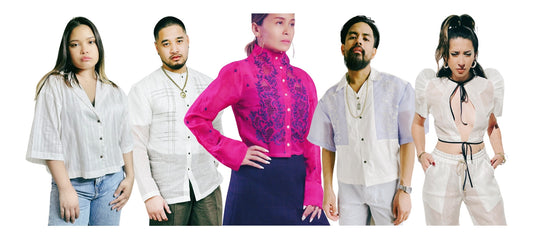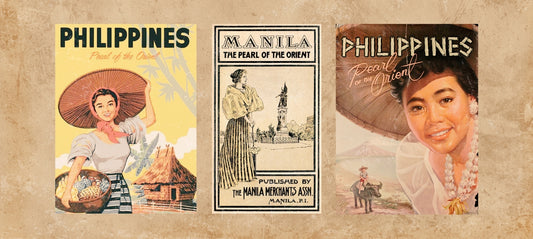To have a deeper and more sustainable connection and allyship to the Black Lives Matter movement and the fight against racism, Filipinxs need to do the work of decolonizing. What does decolonizing look like?
Consider this:
He who does not know how to look back at where he came from will never get to their destination. ~ Jose Rizal
Where did you come from, Filipinxs?
We come from a far flung archipelago in a geographically volatile section of the South Pacific. Over 1,000 years ago, we had thriving communities and traded with the Chinese and many other peoples in the neighbourhood — we also had a steep caste system that included generational slaves.

The Boxer Codex is the earliest known visual documentation of the people of the archipelago when the Spanish landed in what is now known as the Philippines.
Around 500 years ago, the Spanish conquistadors found their beautiful gateway to the East through this archipelago. For over 300 years, they raped and pillaged and colonized us in the name of the Church. After “taming” us, diluting our culture, exploiting our resources, subjugating our matriarchal lineages — among so many other atrocities — and the Spanish-American War, we were sold to the United States. Our lives, our communities, our culture and people all devalued to the basement price of $20M, packaged along with other Spanish colonies and buildings and infrastructure that they built. In 1898, after operating under the guise of being an ally in our struggle for independence from Spain, the US turned around and murdered (most recent account by independent historians, @dating_pilipinas) up to 1.5 million Filipinxs (including children) in the Philippine-American War. Soon after, the mis-education of their “little brown brothers” (the Patriarchy coined this cute nickname for us, erasing women out of the picture all together) began, and within the same generation, the horrors of the war was erased from the collective Filipinx memory. Now we were happy, pliant, English speaking ‘little brown people’, making us prime candidates for future immigrant and “model minority” status.
A "HUMAN ZOO" made up of Ifugao people that they shipped over for the 1904 St. Louis World Fair.
That is over 400 years of colonial mentality — read: internalized white supremacy; a Spanish- and American-flavoured white supremacy seared into our DNA. Imagine a nation of over 7,600 islands made up of groups of people from vastly different indigenous cultures and languages all colonized into one unified nation called The Republic of the Philippines. A nation named after the King of Spain at the time the Spanish landed. A nation of people with no access to a unified cultural identity outside of a colonized one. Let me say that again: we are a nation of people with no unified cultural identity outside of a colonized one. Let that sink in. That is already so much to dismantle. But there is more.
How has our history of colonization contributed to the legacy of our very own Filipinx brand of internalized white supremacy?
Our history has created the “smiling, friendly, and hardworking Filipinx” model minority trope that weaponizes our colonized mentality against Black, Indigenous, and other POC. It reeks of sentiments like, “we are better because we are highly educated, affable and (white) people like us."
This happy, brown colonial subject is crafted through American colonial education-- our struggle for autonomy, our voices, erased along with our stories. In a Slack conversation, Alagadngsining (our 21 year old, Philippine-based surface designer) said that “toxic positivity has become part of the culture […] The problem with our resilience is the speed by which we transform trauma into acceptance.”

Up until the early 2010s, I had met Filipinxs who were educated in the Philippines up to their undergrad years, and they had NEVER heard of the Philippine-American War. So if you want to talk to your parents and grandparents about their “American Dream” you can start there.
Our colonial masters had also succeeded in creating toxic shadeism in our culture where darker-skinned people are intensely discriminated against to the point that the Philippines is the top user of cosmetic skin whitening solutions in the entire world. “Don’t stay out in the sun too long, or you will get dark,” says all of your Titas, Lolas, and Nanays who are from a tropical archipelago just a hiccup north of the equator. I mean, this is not new.
Our history of colonization and generational trauma has also created the deepest, most damaging, and sadly idiosyncratic kind of cultural shame: generations of Filipinxs in the global diaspora do NOT teach their children any native Fililpinx languages, nor much about our culture and history. The discouragement of teaching and speaking Tagalog or any other Filipinx regional language is actually very common even in the Philippines, particularly with the upper classes of society.

This image is from 1920s in Northern California.
A disturbing manifestation of our cultural shame appears in the many Filipinx groups all over the diaspora who have formed Hawaiian dance troupes and perform Hawaiian cultural dances. I know I may catch heat from saying this because this actually has been quite normalized. Hear me out: Hawai'i became an official state of the United States in 1959 (much to the chagrin of many Filipinxs, btw). Representing and passing for Hawaiian was better because it is closer to belonging to our colonizer, America. You would never (..I hope?!) see a second generation Filipinx-American forming a Mexican dance troupe with an all-Filipinx cast. That would be weird and wrong.
This is barely scratching the surface of your story, Filipinxs. I can go on and talk about how Filipinx migrant workers were shipped off to Hawaii (then a U.S. “territory”) and California to be overworked and underpaid on the farms, replacing the slave labour the US lost after implementing the 13th Amendment. How Filipinxs were called dogs and were prohibited by law to marry white women, yet were not allowed to bring their wives or girlfriends or any female relatives with them to the US. And then there’s the US-backed Marcos dictatorship — that’s the chapter that brought the baby boomer generation en masse into the US and all over the world. I am no history teacher, but I read enough to learn what my parents and grandparents didn’t learn.

"Positively no Filipinos allowed"
Un-learning and learning — it needs to happen simultaneously. I personally dedicated a large part of my adulthood doing this, at a time when there were no shareable memes, and without a community around me. It was hard, but I am definitely privileged to have started my journey of decolonization through reading the novels and scholarly writing from the Black Power movement. The straight up power in their resilience in the face of centuries of violent oppression lit that fire in me to look at my own culture, confront the shame I felt, break down the internalized culturally specific patriarchy, unpack all the basura. It urged me to examine our own generational trauma and how that is linked to the experiences of Black People, Indigenous People, and all colonized people.
I am so fired up again about what’s happening now. Even with the controversial Anti-Terrorism Bill that Congress has already passed in the Philippines. It threatens to repeat the atrocities of the Marcos regime. That’s on top of the atrocities of the “War on Drugs” in the last few years that has given police (i.e. the government) impunity to kill thousands people, essentially a war on the poor. The dissent from the young people that has spread online is inspirational. I am not going to lie, I’m scared.
But I'm starting to feel hopeful. Last year on my birthday, the Toronto Raptors had just won the championship and I was moved to see what looked like the ENTIRE city of Toronto unify — but I had wished it was on some real shit. And this year, as I write this on my birthday, my wish has come true. The unity that I witness in the world against white supremacy is unprecedented. This is BIG. We have finally hit the tipping point. And I am so here for it. I know many of us in the Filipinx community are — here in North America, and back in the motherland too.
The support for the Black Lives Matter movement, anti-police, and anti-racism from the Filipinx community is nothing short of inspirational. At the end of the day, it boils down to human rights, and our right to be able to thrive, no matter where we are in the world, no matter who we are, no matter how much money or power we have. And fighting for what is right, even if the wrong has not personally affected you or those close to you. I think to continue to be in solidarity for this movement forever (yes, forever, because that’s what it needs) in a sustainable, authentic and deep way, we need to make sure we decolonize ourselves, look in the mirror and dismantle our own generational trauma: “Understanding our own suffering makes it possible and easier for us to understand the other person’s suffering,” ~ Thich Nhat Hanh. Because when you step to your racist Tita/Tito, Dad/Mom, Lola/Lolo, about their anti-blackness (and racism in general), you need to be equipped with some of those stories that were kept from them. At the same time, you need to be able to show them compassion because they have unresolved generational trauma—the very same ones you’ve inherited from them.
Stay vigilant, Filipinxs. Know yourself. Let’s keep doing the work.
~ Caroline Mangosing
———
June 12 commemorates Philippine Independence Day, but are we truly free, when on that day in 1898 we were sold by Spain, to United States under the Treaty of Paris?
June is now officially Filipinx Heritage Month in Canada. Know yourself, Filipixs.
Here is a list of books where Filipinxs can start their dig (we will be updating this moving forward, so please check back again):
Fiction
Noli Mi Tangere (The Social Cancer) by Jose Rizal
El Filibusterismo (The Reign of Greed) by Jose Rizal
America Is In The Heart by Carlos Bulosan (fiction) And anything by Carlos Bulosan!
Ilustrado by Miguel Syjuco
The Woman Who Had Two Navels and Tales of the Tropical Gothic by Nick Joaquin
Patron Saints of Nothing, Randy Ribay
Leche, R Zamora Linmark
Monstress, Lysley TenorioIn
In the Country: Stories, Mia Alvar
Children's Books
Journey for Justice: The Life of Larry Itliong by Dawn Bohulano Mabalon, PhD with writer Gayle Romasanta, illustrated by Andre Sibayan
Halo Halo Histories : A Lolong Time Ago, A Prehistory of the Philippines by Michelline Suarez, Joonee Garcia, Divine Reyes, illustrated by Benjor Catindig
Non-fiction and Academic works
The Miseducation of the Filipino by Renato Constantino
The Latinos of Asia: How Filipino Americans Break the Rules of Race by Anthony Christian Ocampo
Little Manila Is in the Heart: The Making of the Filipina/o American Community in Stockton, California by Dawn Bohulado Malabon
History of the Philippines: From Indios Bravos to Filipinos by Luis H. Francia
A Short History of the Philippines by Teodoro A. Agoncillo (<-- Agoncillo wrote many Filipinx history books to choose from)
Pasyon and Revolution: Popular Movements in the Philippines 1840-1910 by Reynaldo C. Ileto
White Love and Other Events in Filipino History by Vicente Rafael
Brown Skin, White Minds: Filipino-American Postcolonial Psychology by E.J.R. David
Coming Full Circle: The Process of Decolonization Among Post-1965 Filipino Americans by Leny Mendoza Strobel
Transpacific Femininities by Denise Cruz [academic, focused on an analysis of Maria Clara]
Migrants for Export by Robyn Magalit Rodriguez [easy academic read]
The Crucible: An Autobiography by Colonel Yay, Filipina American Guerrilla, Yay Panlilio, edited by Denise Cruz
Philippine Gay Culture by J.Neil Garcia
Filipino Tattoos: Ancient to Modern by Lane Wilcken
Way of the Ancient Healer: Sacred Teachings From the Philippine Ancestral Traditions by Virgil Apostol
Philippine Folklore
Philippine Folk Literature: An Anthology (Philippine Folk Literature Series, Vol. I-V) by Damiana L. Eugenio (anything by the mother of Philippine folklore!)
A Handbook of Philippine Folklore by Mellie Leanicho Lopez
Creatures of Philippine Lower Mythology by Maximo D. Ramos
Films
Imelda (doc) dir. Ramona S. Diaz 2003
A Thousand Cuts (doc) Ramona S. Diaz 2019
The King Maker (doc) Lauren Greenfield 2018
Heneral Luna (narrative feature) Jerrold Tarog 2015
Goyo (narrative feature) Jerrold Tarog 2018
Cook Books
I am Filipino: And This is How We Cook by Nicole Ponseca
Memories of A Filipino Kitchen by Amy Besa and Romy Dorotan
Instagram Accounts to Follow
Podcasts









